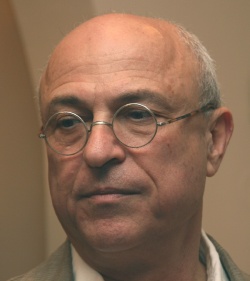Steps to cope with ‘turf war’
14:15–15:30
Session 1
Challenges: Radiology in turf battles.
Prof. Moshe Graif, Director of the Department of Imaging, Faculty of Medicine Tel-Aviv University; Tel Aviv/IL
Turfing is a subversive activity based on a variety of economic and prestigious interests. It is opposed to the trend in modern medicine towards harmonisation, ordinate formation and QA processes. Usually, ‘highjacked’ services are characterised by uncontrolled training processes, the absence of an official syllabus, no board exams, a lack of formal (registered) practice supervision and inadequate maintenance of skills due to the lack of CME and accreditation processes -- not to mention the ethical problems resulting from self referral and the frequent abuse it generates.

Highly active in research, as well as scientific publications, he is a notable contributor to leading international and national congresses, including the ECR (member of the International Relations Committee).
He has also served as Adjunct Associate Professor at the Department of Radiology, Thomas Jefferson University Hospital, Philadelphia, USA, and Visiting Professor at the Department of Radiology, St Paul's Hospital, UBC, Vancouver, Canada and also at the Department of Radiology in the Italian Hospital in Buenos Aires, Argentina, which is affiliated to BA University.
Allowing non-radiologists to "pick the cherries" off a discipline might cripple it and create a situation where no one will be ready to provide the remaining, less attractive, services (leftovers).
Therefore, the provision of a satisfactory continuous service (avoiding a ‘vacuum’) and super specialised training and accreditation programmes are some of the necessary steps to cope with such trends.
Radiologists should also focus on enhancing the personal contact with patients that has been significantly reduced in the last decade.
Yet, radiologists should be aware that needful conditions, such as a professional vacuum and overlap of territorial borders, can also generate turf issues.
A convergence approach, consisting of joint teams that bridge sub-specialties, may prove constructive in overlap situations.
Finally, the containment of technology and consumption by implementing the regulation of needs and decisions supporting (pre-authorisation) centres, lately becoming more popular, probably will be helpful in reducing both inappropriate exams and inappropriate performances.
11.02.2011











